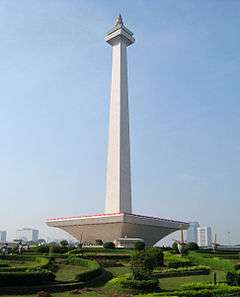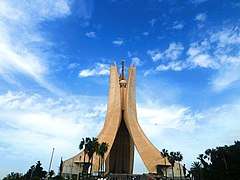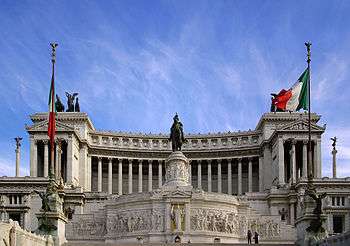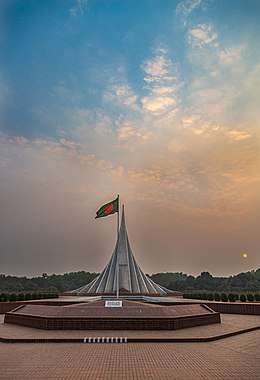National monument

A national monument is a monument constructed in order to commemorate something of national importance such as the country's founding, independence or a war.
The term may also refer to a specific monument status, such as a national heritage site, which most national monuments are by reason of their cultural importance rather than age. The National monument aims to represent the nation, and serve as a focus for national identity.
Overview
A series of structures or areas deemed to be of national importance and therefore afforded protection by the state are part of a country's cultural heritage. These national heritage sites are often called something different per country and are listed by national conservation societies. Romania has listed at least one plant as a national monument, Nymphaea lotus f. thermalis.[1]
Example

National monument
- The National Monument (Indonesia)
- Maqam Echahid (Algiers, Algeria)
- The Pakistan Monument (Islamabad)
- The National Martyr's Memorial (Dhaka)
- The National Monument (Malaysia)
- The Netherlands National Monument (Amsterdam)
- The National Monument of Scotland (Edinburgh)
- National Monument to Victor Emmanuel II (Rome)
- National Kaiser Wilhelm Monument (Berlin)
National heritage sites
References
- ↑ Veler, Ana (November 2008). "Nymphaea lotus up north, naturally". Water Gardeners International. Bucharest, Romania. 3 (4). Retrieved 9 August 2014.

